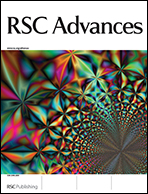This paper reviews recent research developments in biological thermophilic lignocellulosic biomass conversion based on sixty four references published in the past 4 years (2009–2012). Bioconversion of hydrolysate and lignocellulosic biomass with or without pretreatment under thermophilic conditions (with temperatures higher than 50 °C) to fermentation products like hydrogen, methane, ethanol and carboxylic acids is discussed in terms of the bioaugmentation techniques and microorganisms involved. The discussion was divided into two branches according to the form of substrate applied: one branch targeted the fermentation of liquid hydrolysate (liquid fraction generated from the pretreatment of lignocellulosic biomass); the other one summarized the studies using raw or pretreated solid lignocellulosic biomass as a feedstock. Fermentation of the hydrolysate was discussed from the aspects of hydrolysate toxicity tolerance and hydrolysate detoxification techniques, while, process affecting parameters like pH, enrichment processes, substrate type and loading as well as microbial communities were reviewed for solid lignocellulosic biomass fermentation. Key information was compiled into four tables respectively summarizing the optimal fermentation conditions for the production of hydrogen/methane and ethanol/carboxylic acids from hydrolysate and lignocellulosic biomass. Information delivered in this article may shed light on the perspectives of the scientific and technical challenges faced by thermophilic anaerobic lignocellulose bioconversion.

You have access to this article
 Please wait while we load your content...
Something went wrong. Try again?
Please wait while we load your content...
Something went wrong. Try again?


 Please wait while we load your content...
Please wait while we load your content...